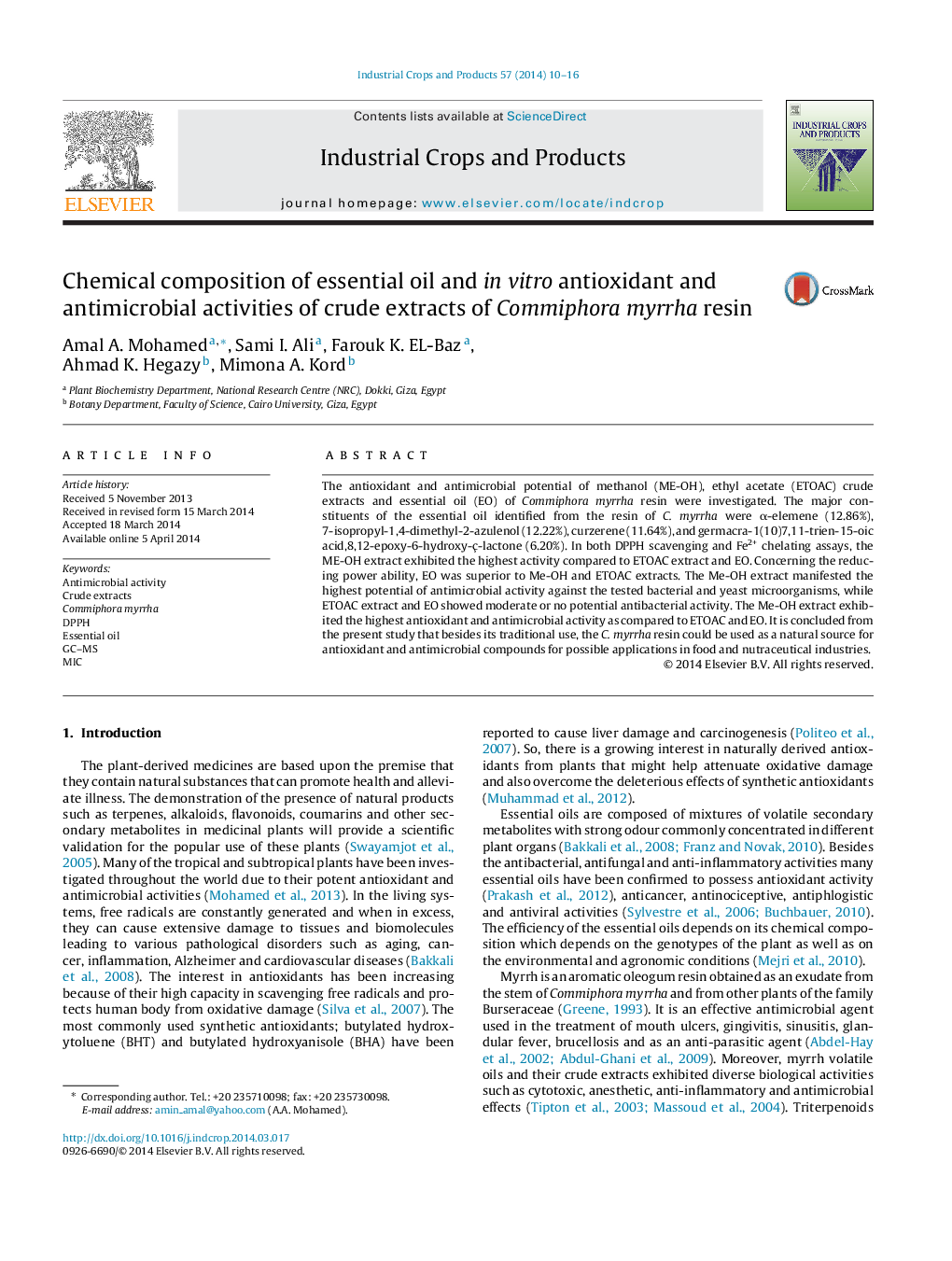| Article ID | Journal | Published Year | Pages | File Type |
|---|---|---|---|---|
| 4513323 | Industrial Crops and Products | 2014 | 7 Pages |
•GC–MS analysis of essential oil showed major different components.•In DPPH and Fe2+ chelating assays, methanol extract exhibited the highest activity.•For the reducing power ability essential oil was superior to other resin extracts.•The methanol extract manifested the highest potential of antimicrobial activity.•Myrrha resin could be used as a natural source of pharmaceutical components.
The antioxidant and antimicrobial potential of methanol (ME-OH), ethyl acetate (ETOAC) crude extracts and essential oil (EO) of Commiphora myrrha resin were investigated. The major constituents of the essential oil identified from the resin of C. myrrha were α-elemene (12.86%), 7-isopropyl-1,4-dimethyl-2-azulenol (12.22%), curzerene (11.64%), and germacra-1(10)7,11-trien-15-oic acid,8,12-epoxy-6-hydroxy-ç-lactone (6.20%). In both DPPH scavenging and Fe2+ chelating assays, the ME-OH extract exhibited the highest activity compared to ETOAC extract and EO. Concerning the reducing power ability, EO was superior to Me-OH and ETOAC extracts. The Me-OH extract manifested the highest potential of antimicrobial activity against the tested bacterial and yeast microorganisms, while ETOAC extract and EO showed moderate or no potential antibacterial activity. The Me-OH extract exhibited the highest antioxidant and antimicrobial activity as compared to ETOAC and EO. It is concluded from the present study that besides its traditional use, the C. myrrha resin could be used as a natural source for antioxidant and antimicrobial compounds for possible applications in food and nutraceutical industries.
